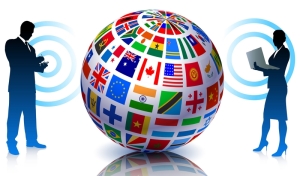 Currently, there are two sets of accounting standards. Generally Accepted Accounting Principles (GAAP) is rules-based with approximately 25,000 rules and used primarily in the United States. International Financial Reporting Standards (IFRS) is a principle based set of standards with only 2,000 rules. The entire codification of IFRS fits into one volume, whereas, there are multiple volumes of information in GAAP. The difference between the two concepts (rules vs. principles) is comprehensive and will require a dramatic change in the way accounting procedures will be handled. How do we globalize a single set of high quality accounting standards?
Currently, there are two sets of accounting standards. Generally Accepted Accounting Principles (GAAP) is rules-based with approximately 25,000 rules and used primarily in the United States. International Financial Reporting Standards (IFRS) is a principle based set of standards with only 2,000 rules. The entire codification of IFRS fits into one volume, whereas, there are multiple volumes of information in GAAP. The difference between the two concepts (rules vs. principles) is comprehensive and will require a dramatic change in the way accounting procedures will be handled. How do we globalize a single set of high quality accounting standards?
The SEC issued a “Roadmap” in November 2008, outlining seven so called milestones that had to be met in order for the United States to move forward with the acceptance of IFRS. The seven milestones range from improvements in accounting standards, education and training related to IFRS and the accountability and funding of the International Accounting Standards Committee Foundation. In 2011, these seven milestones were looked at by the SEC, and it was decided that the SEC needed more time to review and issue a final report of the adoption of the international standards. Some key differences not yet worked out included accounting for Leases, Revenue Recognition, Financial Statement Presentation and Accounting for Financial Instruments. These were high priorities that needed to be resolved. Now it’s looking more toward 2015 when the convergence will take place.
Why bother switching to IFRS? Leave well enough alone. Not that easy anymore. With main competitors in today’s global market already using the International Financial Reporting Standards, it is time for the United States to be competitive with the countries that have already accepted and are following the IFRS. It’s time to make the switch to these standards also. Consistency should be the number one reason why the United States should converge. Multinational corporations, or a large corporation with operations and subsidiaries in several countries, exist in a majority of countries. If every country has a different set of financial standards, how are we to really understand and compare numbers? We need to compare apples to apples to get a true financial picture. With one set of international standards being used, everyone will be on the same page. It’s time for the United States to step up and become part of the global economy.
Lastly, the United States can actually profit from these countries by learning what they did wrong when they converged and avoiding these same mistakes when it’s our turn; possibly resulting in a substantial amount of money and time saved.
